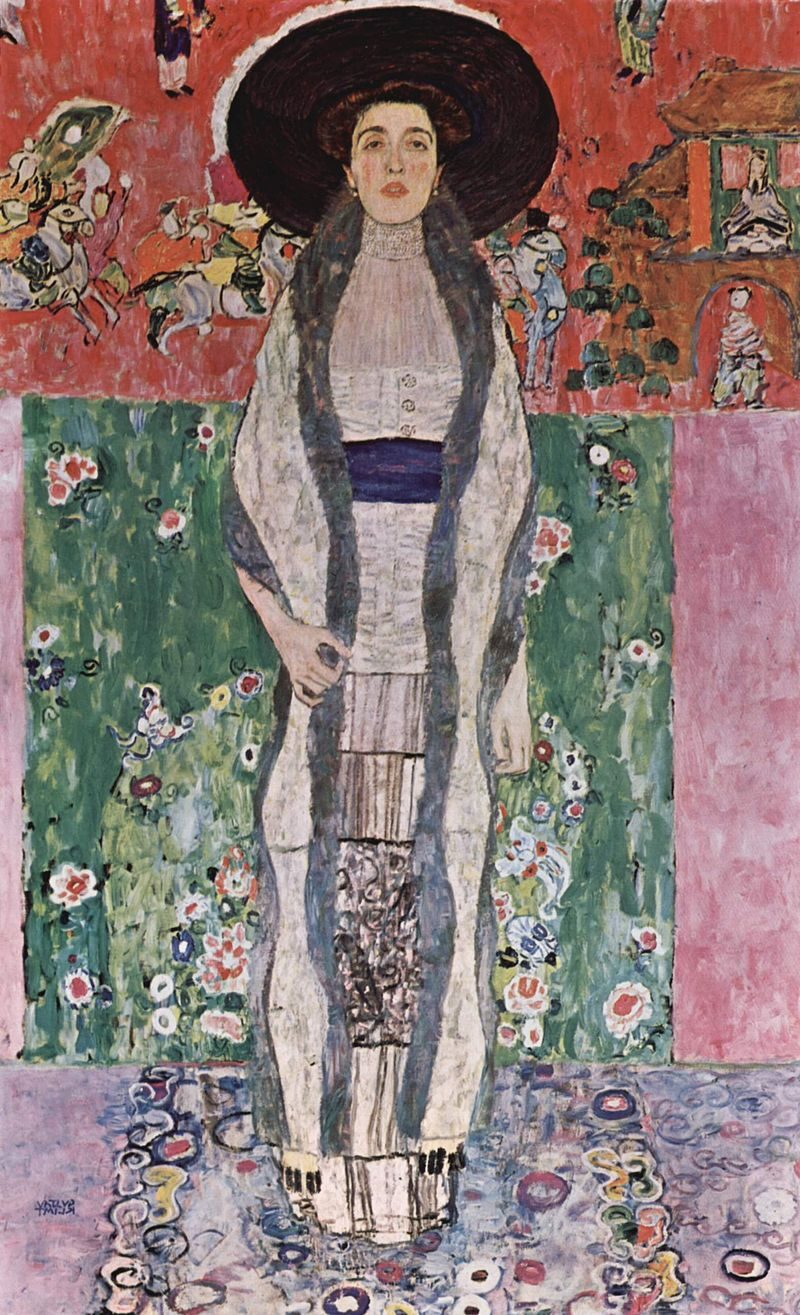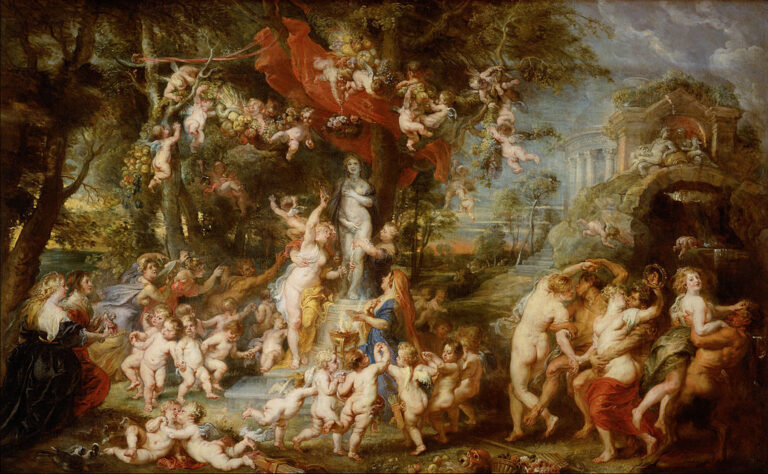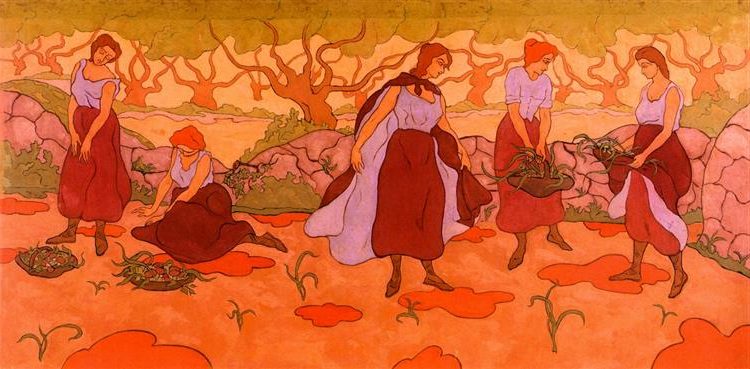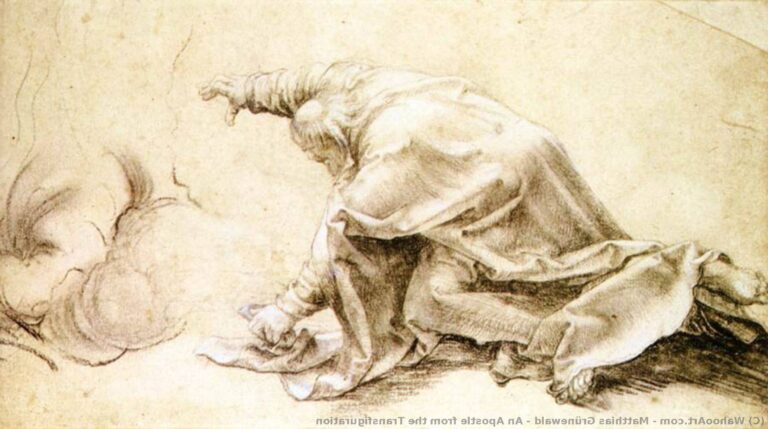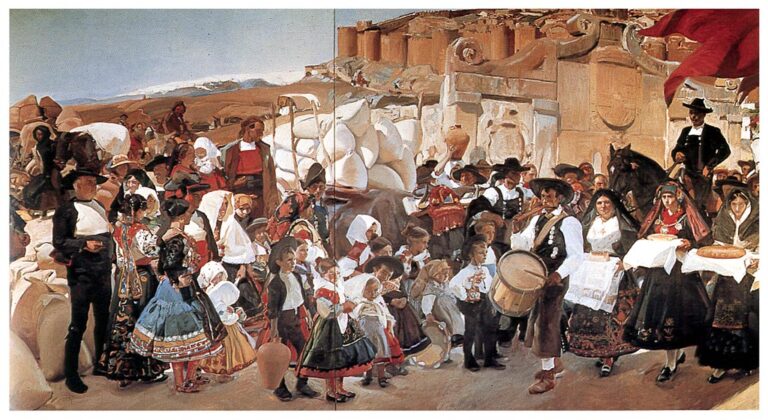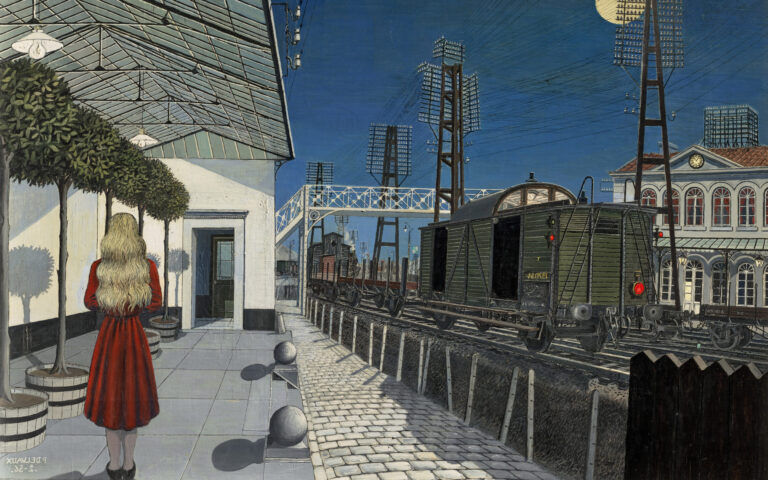Gustav Klimt Painter: The Iconic Figure of Vienna Secession Movement
Born: 14 July 1862, Baumgarten, Austrian Empire
Death: 6 February 1918, Vienna, Austria-Hungary
Art Movement: Symbolism, Art Nouveau
Nationality: Austrian
Institution: Vienna Kunstgewerbeschule (University of Applied Arts Vienna)
Gustav Klimt Painter: The Iconic Figure of Vienna Secession Movement
Life and Career of Gustav Klimt
Gustav Klimt (1862-1918) was an Austrian symbolist painter. He became one of the most prominent members of the Vienna art scene. His artistic journey took him from traditional academic painting to becoming a revolutionary figure who helped define the Art Nouveau movement.
Early Life and Education
Born on July 14, 1862, in Baumgarten near Vienna, Gustav Klimt grew up in a family of artistic craftsmen. His father was a gold engraver, which influenced Klimt’s later use of gold leaf in his paintings.
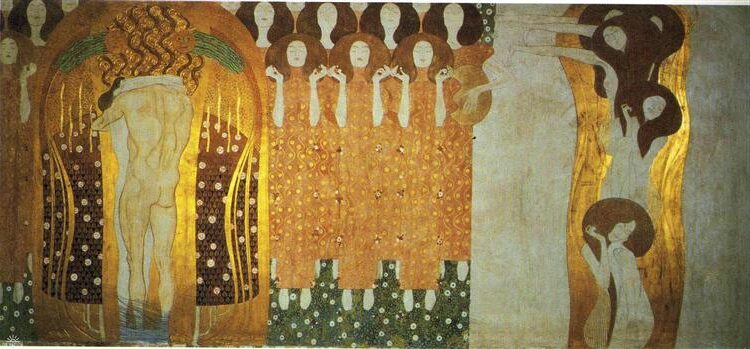
The Beethoven Frieze: The Longing for Happiness Finds Repose in Poetry, Right Wall (1902)
Klimt studied at the Vienna School of Arts and Crafts (Kunstgewerbeschule) from 1876 to 1883. There, he received traditional academic training focusing on architectural painting.
In his early career, Klimt worked with his brother Ernst and Franz Matsch, forming the “Company of Artists.” They created decorations for theaters and public buildings throughout the Austro-Hungarian Empire.
His early style was conservative and academic, earning him recognition from Vienna’s establishment. This early success led to prestigious commissions, including decorations for the Burgtheater and the Kunsthistorisches Museum.
Founding the Vienna Secession
By the mid-1890s, Klimt grew dissatisfied with traditional artistic conventions. In 1897, he became the first president of the Vienna Secession, a group that broke away from the conservative Künstlerhaus.
The Secession’s motto was “To every age its art, to art its freedom.” Under Klimt’s leadership, the group organized exhibitions that introduced Vienna to international modern art movements.
During this period, Klimt developed his distinctive style, combining naturalistic rendering with decorative elements. His “Golden Phase” began around 1898, featuring works like “The Kiss” (1907-1908) and “Portrait of Adele Bloch-Bauer I” (1907).
Klimt’s work became more controversial, especially his paintings for the University of Vienna. These works—Philosophy, Medicine, and Jurisprudence—were criticized for their explicit symbolism and never installed as intended.
Later Career and Death
After leaving the Secession in 1905, Klimt continued to develop his unique style. His later works featured brighter colors and more simplified forms, showing influence from younger artists and international movements.
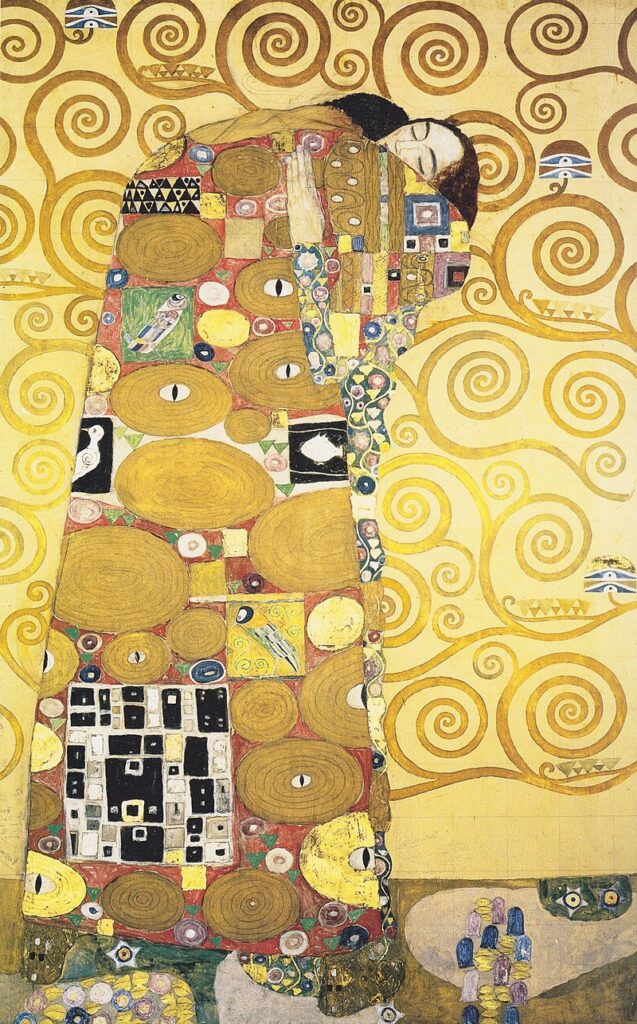
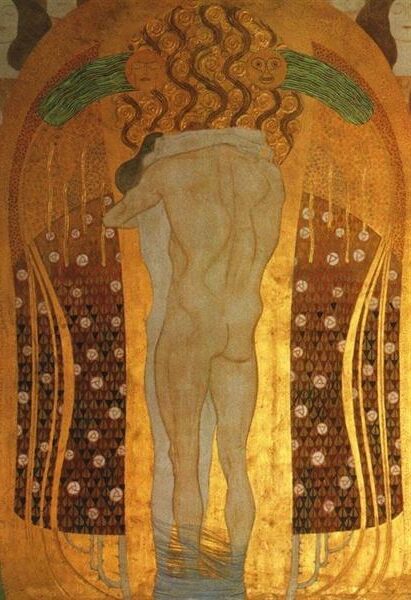
Klimt rarely traveled but was profoundly influenced by Byzantine mosaics he saw in Ravenna, Italy. These inspired his extensive use of gold and decorative patterns.
His later portraits of Viennese society women became his most financially successful works. These paintings combined realistic faces with boldly patterned, two-dimensional backgrounds.
Klimt suffered a stroke in 1918 and died of pneumonia on February 6 that same year. He left several paintings unfinished, including “The Bride,” now displayed in the Klimt collection at the Belvedere Palace in Vienna.
His artistic legacy continues to influence modern art, and his paintings rank among the most expensive artworks ever sold.
Artistic Style and Techniques
Gustav Klimt developed a distinctive artistic approach that set him apart from other painters of his era. His work combined rich decorative elements with profound symbolism, creating a unique visual language that continues to captivate viewers today.
Symbolism and Art Nouveau Influences
Klimt’s work emerged during the Vienna Secession movement, where Art Nouveau’s flowing lines and organic forms shaped his early style. He rejected academic traditions in favor of more expressive and symbolic representations.
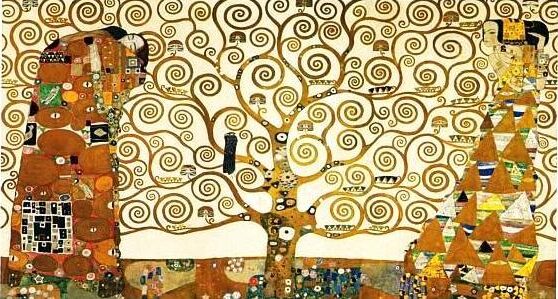
The Tree of Life, Stoclet Frieze (c. 1909) by Gustav Klimt
His paintings often featured allegorical themes and mythological references. Female figures in his work represented universal concepts like life, death, and sexuality—themes that challenged conservative Viennese society.
Klimt’s style incorporated flattened perspectives and decorative surfaces that reflected Japanese art influences. The two-dimensional quality of his compositions created a dreamlike atmosphere where reality and fantasy merged.
His color choices were deliberate and meaningful, using gold to suggest divinity and blues to evoke emotional depth. These symbolic color associations added layers of meaning beyond the visible subjects.
Use of Gold Leaf
Gold leaf became Klimt’s signature technique, most famously displayed in his “Golden Phase” works like “The Kiss” (1907-1908). He applied actual gold leaf to his canvases, creating luminous surfaces that reflected light.
This technique connected his work to Byzantine mosaics and medieval religious art. The gold backgrounds elevated his subjects to an almost sacred status, blurring the line between the earthly and divine.
Klimt’s gold techniques required meticulous craftsmanship. He often combined gold with silver leaf and other metallic elements to create subtle variations in texture and reflectivity.
The gold areas in his paintings created a stark contrast with the more naturalistically painted faces and hands. This juxtaposition highlighted the tension between reality and abstraction in his work.
Mosaic Patterns and Ornamentation
Klimt filled his compositions with elaborate patterns that resembled mosaics, creating rhythmic visual textures. These ornamental elements formed a decorative framework for his subjects.
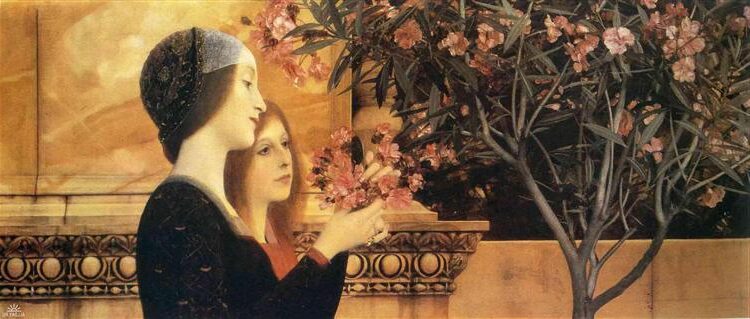
Two Girls With An Oleander (1890) by Gustav Klimt
His patterns included:
- Spirals representing growth and life
- Eyes symbolizing wisdom and awareness
- Geometric shapes suggesting order and structure
- Floral motifs connecting to natural cycles
The detailed ornamentation often contained symbolic content that complemented the main subject. These patterns weren’t merely decorative but conveyed additional meaning within the artwork.
Klimt’s use of mosaic-like structures created a tension between flat pattern and three-dimensional form. This approach challenged traditional pictorial space and anticipated later abstract movements.
His ornamental style influenced numerous artists and designers, particularly in the decorative arts.
Notable Works and Legacy
Gustav Klimt created many significant artworks during his career that showcased his unique style of combining ornament with eroticism. His paintings often featured gold leaf, intricate patterns, and symbolic imagery that continue to influence artists today.
The Kiss
“The Kiss” (1908) stands as Klimt’s most recognized masterpiece. This iconic painting depicts two lovers embraced in a tender moment, wrapped in elaborate golden robes against a gold background.

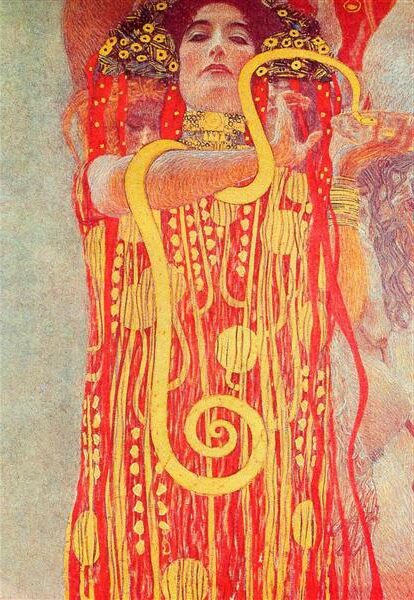
The male figure wears geometric patterns while the female is adorned with flowery, circular designs. This contrast represents the fundamental difference between masculine and feminine in Klimt’s artistic vision.
The painting exemplifies Klimt’s “Golden Phase,” when he incorporated gold leaf into his work. The technique was inspired by Byzantine mosaics he had seen during his travels.
“The Kiss” resides in Vienna’s Belvedere Palace and has become one of art history‘s most reproduced images. Its combination of decorative elements and emotional intimacy continues to resonate with viewers worldwide.
Portrait of Adele Bloch-Bauer I
Often called “The Woman in Gold,” this 1907 portrait is one of Klimt’s most valuable works. The painting depicts Adele Bloch-Bauer, a wealthy Jewish patron of the arts in Vienna.
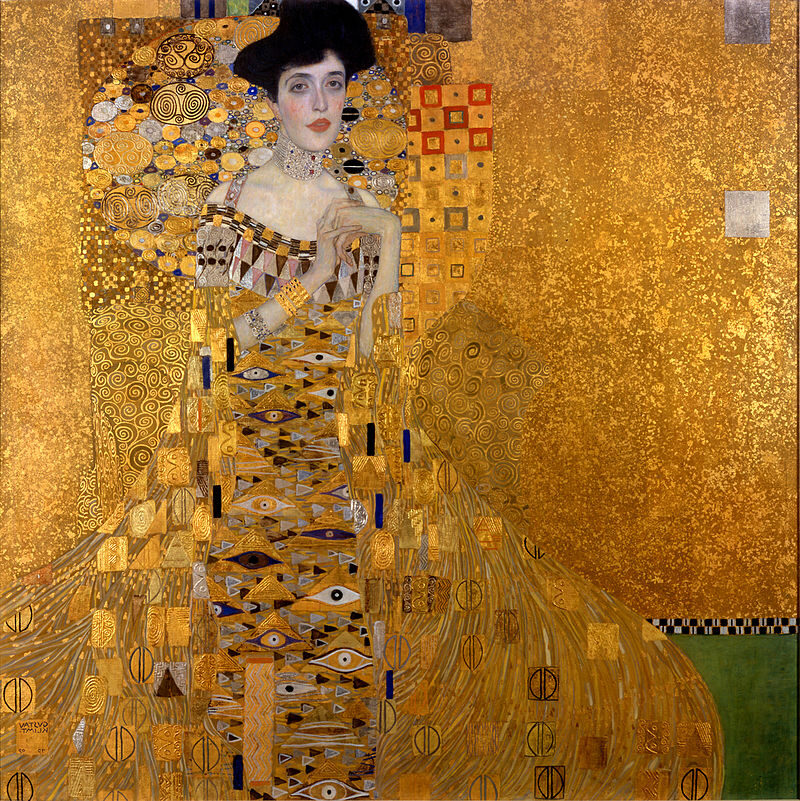
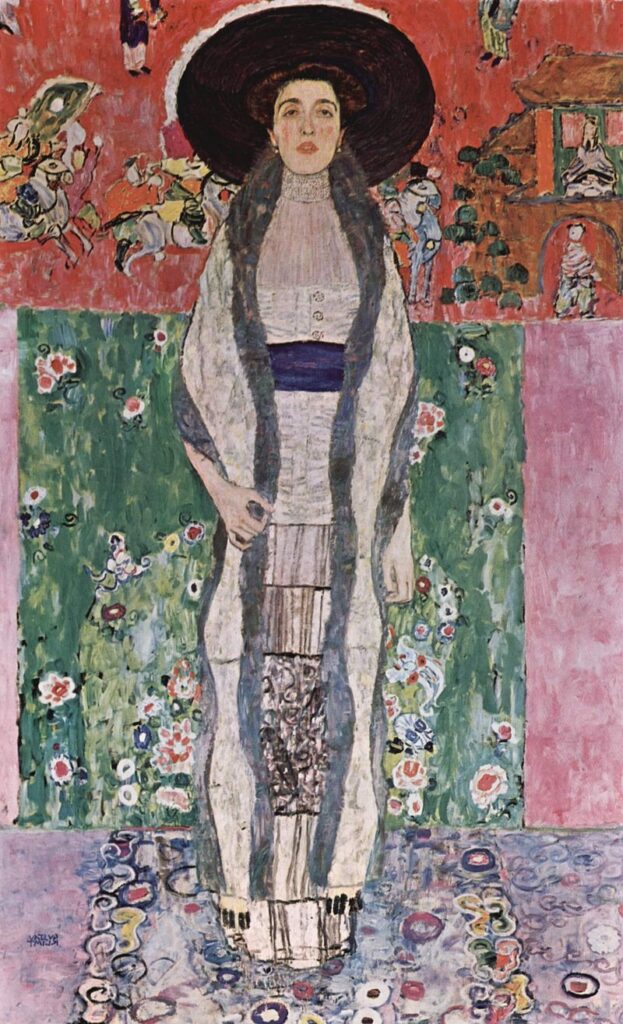
The portrait features an astonishing amount of gold leaf and silver, with intricate patterns surrounding the subject. Klimt spent three years creating this masterpiece, producing over 100 preparatory sketches.
The painting’s history includes a dramatic Nazi theft during World War II and a famous restitution case. Maria Altmann, Adele’s niece, fought a lengthy legal battle to recover the work from the Austrian government.
In 2006, it was purchased by Ronald Lauder for $135 million (then the highest price ever paid for a painting) and now resides in the Neue Galerie in New York City.
Beethoven Frieze
Created in 1902 for the 14th Vienna Secessionist exhibition, the Beethoven Frieze is a monumental work spanning three walls. The frieze was designed as a visual interpretation of Beethoven’s Ninth Symphony.
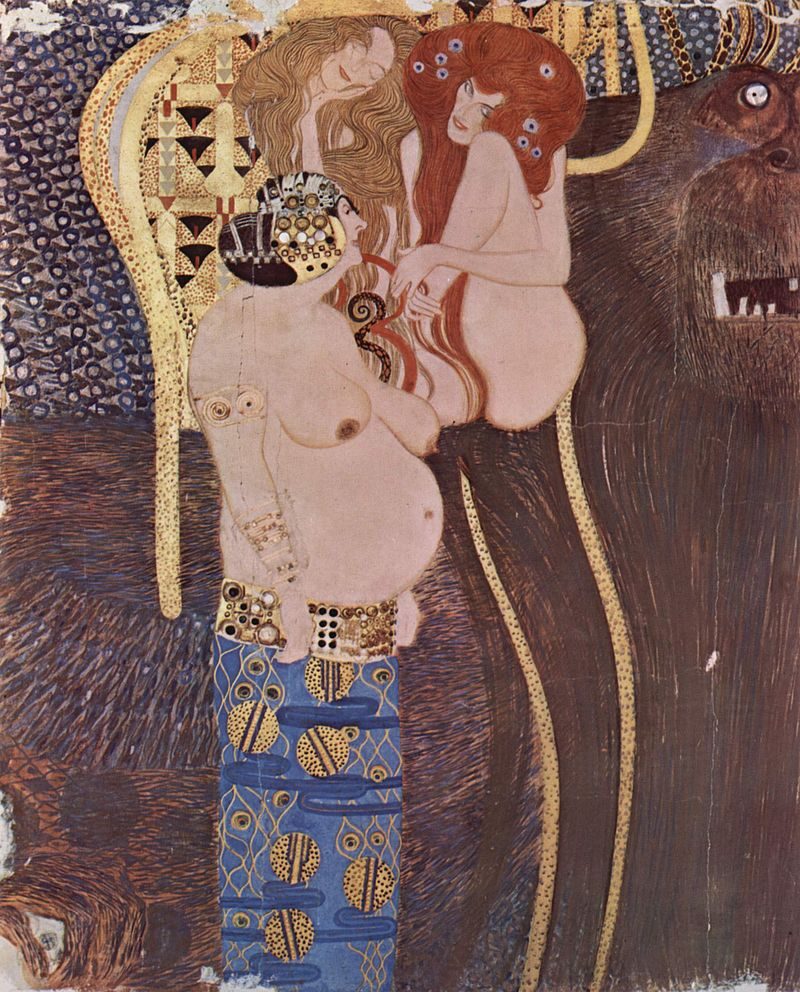
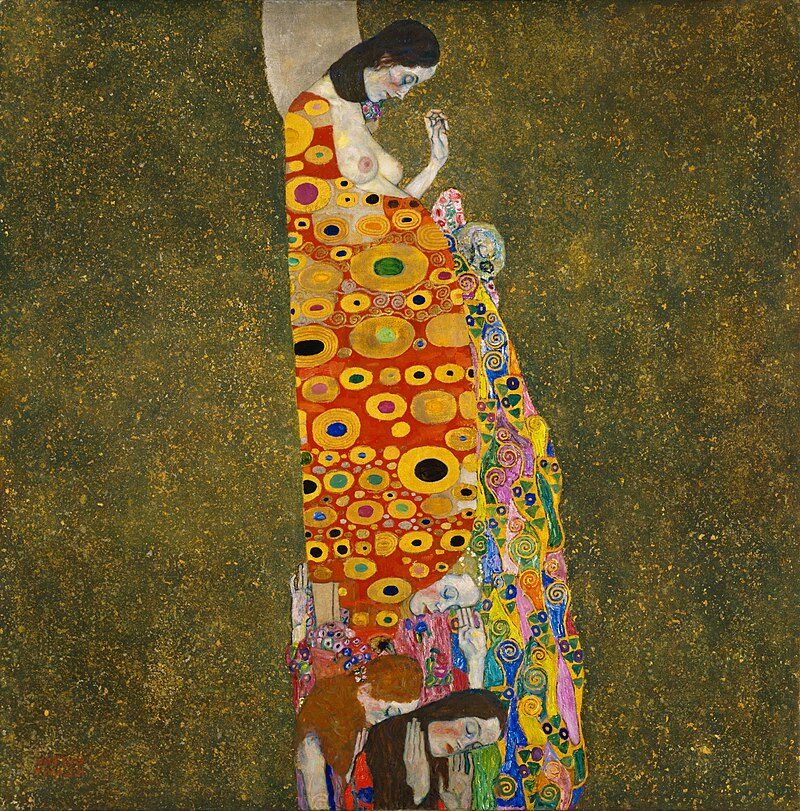
The work measures 7 feet high and 112 feet long, depicting humanity’s search for happiness. Klimt divided the narrative into three sections: Yearning for Happiness, Hostile Forces, and Joy/This Kiss.
The frieze combines allegorical figures with gold accents and includes controversial, erotic imagery that shocked viewers. Critics condemned the work as “pornographic,” reflecting the tension between Klimt’s artistic vision and conservative Vienna.
Originally intended as a temporary installation, the frieze was preserved and eventually restored to its original display location at the Secession Building in Vienna, where visitors can view it today.
Impact on Modern Art
Klimt’s distinctive style bridged 19th-century academic painting and 20th-century modernism. As a founding member of the Vienna Secession movement, he rejected artistic conventions and embraced a more decorative approach.

Water Snakes II (1907) by Gustav Klimt
His use of ornament, pattern, and symbolism influenced Art Nouveau and later decorative arts movements. Artists like Egon Schiele and Oskar Kokoschka developed their styles under his mentorship.
Klimt’s frank approach to sexuality and the female form challenged Victorian-era taboos and helped pave the way for expressionism. His integration of two-dimensional pattern with representation created a unique visual language.
Today, Klimt’s works command exceptional prices at auction and draw massive crowds to exhibitions worldwide. His images appear on countless merchandise items, making his artistic vision accessible beyond museum walls.
Frequently Asked Questions
Gustav Klimt remains one of the most fascinating artists of the late 19th and early 20th centuries. His distinctive style, masterful techniques, and artistic evolution continue to captivate art lovers worldwide.
What are the defining characteristics of Gustav Klimt’s painting style?
Klimt’s painting style features ornate, decorative elements and liberal use of gold leaf. He combined flat, patterned surfaces with more naturalistic rendering of faces and hands.
His work shows strong Byzantine influences, especially in his “Golden Phase” paintings like “The Kiss.” Many of his works contain intricate geometric patterns and symbols.
Klimt also incorporated erotic themes throughout his career, often depicting women in sensual poses. His portraits frequently used symbolic elements to reveal aspects of the subject’s personality.
Which painting is considered Gustav Klimt’s masterpiece, and why?
“The Kiss” (1907-1908) is widely regarded as Klimt’s greatest masterpiece. This iconic work exemplifies his Golden Phase, featuring a couple embracing on a gold background.
The painting showcases Klimt’s signature blend of realistic portraiture with decorative, symbolic patterns. Its universal theme of romantic love resonates with viewers across generations.
The work’s rich gold leaf application and intricate patterns demonstrate Klimt’s technical mastery. Art historians also value it as a perfect expression of Art Nouveau and Symbolist movements.
How did Gustav Klimt’s work evolve throughout his career?
Klimt began his career painting in a conventional academic style in the 1880s. His early work focused on architectural decorations and theater designs.
In the 1890s, he shifted toward Symbolism and helped found the Vienna Secession. During this period, his style became more decorative and explored psychological themes.
His Golden Phase (1899-1910) marked his most recognizable period, featuring extensive use of gold leaf. In his later years (1911-1918), Klimt’s work became more colorful and expressionistic, with looser brushwork and brighter palettes.
What role did the Vienna Secession play in Klimt’s artistic development?
The Vienna Secession, founded in 1897 with Klimt as its first president, provided him crucial artistic freedom. This movement rejected traditional academic art in favor of new styles emerging across Europe.
Through the Secession, Klimt connected with international modernist movements. The group’s motto “To each age its art, to art its freedom” reflected Klimt’s own artistic philosophy.
The Secession’s exhibitions introduced Klimt to diverse artistic influences from across Europe. This exposure helped him develop his unique style that merged decorative elements with symbolism.
How has Gustav Klimt’s work been received and interpreted by art historians?
Art historians initially viewed Klimt’s work with controversy due to its erotic content. His University of Vienna ceiling paintings were rejected as “pornographic” by authorities.
By the mid-20th century, critics began recognizing Klimt’s importance to modernism. His work is now interpreted as bridging 19th-century academic art with 20th-century expressionism.
Contemporary scholars focus on Klimt’s complex relationship with female subjects. His portraits of women are analyzed for both their potential objectification and their psychological depth.
Can you outline the influence of symbolism and Art Nouveau on Klimt’s artwork?
Symbolism influenced Klimt’s use of allegorical imagery to express abstract ideas. His paintings often employ symbols like eyes, circles, and specific flowers to convey deeper meanings.
Art Nouveau shaped Klimt’s decorative approach with flowing lines and organic forms. The movement’s integration of fine and applied arts aligned with Klimt’s desire to create total artworks.
Both movements encouraged Klimt to explore psychological themes in his work. His paintings often delve into universal topics like love, death, and sexuality through symbolic representation rather than literal depiction.




